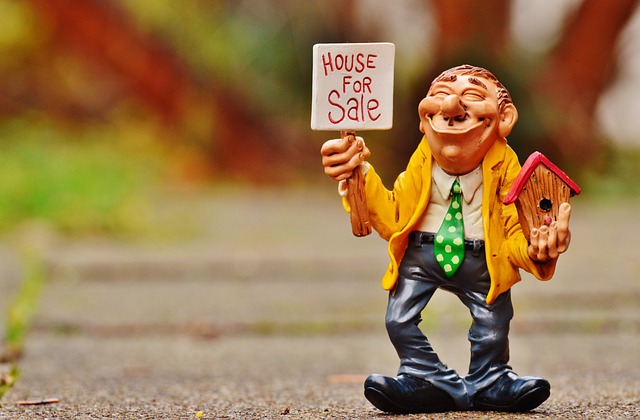Smoke damage from fires in Houston homes poses health risks and hidden dangers, including toxic gases, soot, and charred materials contaminating air and surfaces. Homeowners and buyers must understand these hazards when navigating the sale of fire-damaged properties. Thorough inspections are key to identifying damage extent and potential health risks. Professional remediation requires containment, cleaning, decontamination, and restoration using high-quality materials. Careful handling includes assessing, remediating, deep cleaning, deodorizing, repairing structural issues, and showcasing potential with professional marketing. Partnering with a knowledgeable real estate agent specializing in selling fire-damaged homes in Houston is crucial for success.
In Texas, smoke damage from fires can pose significant hidden hazards, affecting both health and property value. This article guides you through the intricacies of smoke damage remediation in Houston, from understanding its subtleties to navigating the restoration process. We explore key considerations for assessing fire damage, effective remediation steps, suitable restoration materials and techniques, and valuable tips for selling your fire-damaged home in Houston real estate market.
- Understanding Smoke Damage: The Hidden Hazards in Your Home
- Assessing Fire Damage: What to Look For in a Houston Property
- The Steps Involved in Smoke Damage Remediation
- Restoring Your Houston Home: Materials and Techniques for Success
- Selling Your Fire-Damaged Home: Tips and Considerations for Houston Real Estate
Understanding Smoke Damage: The Hidden Hazards in Your Home

Smoke damage, often overlooked, can pose significant health risks and hidden dangers within a home. When a fire occurs, even if it seems contained, the aftermath can leave behind harmful residues. These include toxic gases, soot, and charred materials that can contaminate the air and surfaces in your property. In Houston, where selling fire damaged homes is not uncommon, understanding these hazards is crucial for both homeowners and potential buyers.
The invisible impacts of smoke damage are considerable. It can cause respiratory issues, allergies, and even long-term health problems due to inhalation of toxic fumes. Soot, a byproduct of combustion, sticks to surfaces, making it difficult to clean and potentially leading to further deterioration if left untreated. Additionally, the smell of smoke can linger for months, affecting indoor air quality and the overall appeal of the home in the eyes of potential buyers.
Assessing Fire Damage: What to Look For in a Houston Property

When assessing fire damage in a Houston property, understanding what to look for is crucial for homeowners considering whether to sell their fire-damaged home. The first step is to conduct a thorough inspection to identify the extent of the smoke and fire damage. This includes examining walls, ceilings, floors, and furniture for charring, blistering, or discoloration, which can indicate the intensity of the fire. Pay close attention to odours as well; a strong smoky smell could persist even after visible signs have faded, indicating remaining residues.
Next, check for structural integrity issues such as weakened beams, warped floors, or damaged roofs. These problems may require costly repairs and should be addressed before putting the property back on the market. Additionally, assess the potential health risks posed by asbestos, lead paint, or mold that often accompany smoke damage. Professionals can test for these hazards and provide safe removal options to ensure the safety of future occupants. For those considering selling a fire-damaged home in Houston, being well-informed about these factors is essential for setting realistic expectations and determining the best course of action.
The Steps Involved in Smoke Damage Remediation

Smoke damage remediation is a meticulous process that requires professional expertise, especially in Texas, where real estate markets like Houston are bustling with activity. When dealing with smoke damage, whether from a kitchen fire or a larger incident, it’s crucial to follow a structured approach to restore your property to its pre-damaged condition. The first step involves assessing the extent of the damage; this thorough inspection helps determine which materials can be saved and which require replacement.
Once the assessment is complete, remediation begins with containment to prevent further contamination. This may involve sealing off affected areas and using specialized equipment to remove soot and odors. The next phase includes cleaning and decontaminating surfaces, restoration of structural elements, and addressing any health risks associated with smoke residue. For a selling fire-damaged home in Houston, it’s essential to engage reputable professionals who understand local building codes and market trends, ensuring the property is not only restored but also enhanced for potential buyers.
Restoring Your Houston Home: Materials and Techniques for Success

When restoring a fire-damaged home in Houston, selecting the right materials and techniques is paramount for achieving optimal results. Professionals recommend using smoke damage remediation products designed to neutralize odors and prevent further deterioration. High-quality building supplies such as non-porous surfaces (like tile or vinyl) and water-resistant materials are crucial for areas exposed to smoke and soot, ensuring your home not only looks its best but also stands the test of time.
Effective techniques include thorough cleaning with specialized solutions to remove ash and residue, followed by drying and sealing processes. For structural elements, professionals may employ power washing or steam cleaning to eliminate stubborn deposits. In addition, using air purifiers and dehumidifiers helps alleviate odors and control moisture levels, which are essential steps in preparing your Houston home for sale after fire damage.
Selling Your Fire-Damaged Home: Tips and Considerations for Houston Real Estate

Selling a fire-damaged home in Houston can be a challenging task, but with careful preparation and strategic marketing, it’s definitely achievable. The first step is to assess the extent of the smoke damage. Smoke residue can leave an unpleasant odor and even cause long-term health issues for potential buyers, so addressing these issues is crucial. Consider hiring professionals who specialize in smoke damage remediation to clean and restore your property thoroughly. This process includes deep cleaning, deodorizing, and repairing any structural damage caused by the fire.
Once your home is remediated, focus on presenting it in the best light during the selling process. Highlight the positive aspects of the property while being transparent about any remaining marks or areas that were affected by smoke. Professional photography can be a game-changer here; it allows buyers to visualize the potential of the space and imagine their own items replacing those that were damaged. Additionally, working with an experienced real estate agent who understands the local market and has handled similar situations before will ensure your home is marketed effectively to attract interested buyers in Houston.
Smoke damage, often overlooked as a secondary concern after a fire, can pose significant health risks and property deterioration. This article has guided Houston homeowners through the process of understanding, assessing, and remediating smoke damage, emphasizing the importance of professional assistance for a successful restoration. For those considering selling their fire-damaged home in Houston, it’s crucial to know that proper remediation and an honest presentation of repairs can significantly enhance the property’s appeal and marketability. By following the steps outlined here, homeowners can navigate the process with confidence, ensuring a safer, healthier living environment and potentially attracting discerning buyers who appreciate thorough smoke damage remediation.






